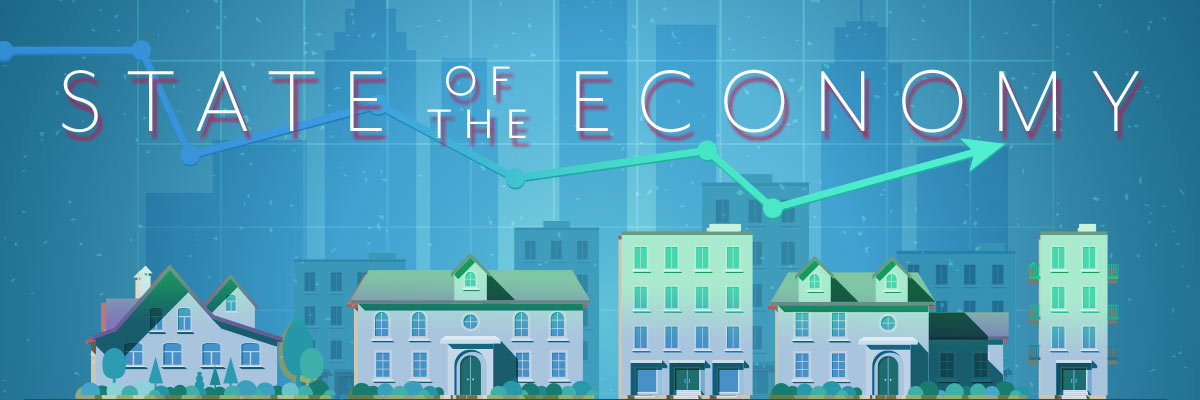Tracking the State of the Economy: GDP and Unemployment
July 30, 2020
 On Thursday, July 30, 2020, the Bureau of Economic Analysis released gross domestic product (GDP) data which revealed what most already knew—that the U.S. economy suffered historic losses in the 2nd quarter. GDP contracted at an annualized rate of 32.9% in the 2nd quarter of 2020, the worst drop on record. This data does not mean that the economy shrank by a third. The annualized rate is often used to report on changes in the economy; however, it is not as helpful a concept during this period. The annualized rate assumes that the GDP change in the 2nd quarter would also be experienced over the following 3 quarters—that is, over a whole year. Looking ahead to the 3rd quarter, it is very likely that economic conditions will improve.
On Thursday, July 30, 2020, the Bureau of Economic Analysis released gross domestic product (GDP) data which revealed what most already knew—that the U.S. economy suffered historic losses in the 2nd quarter. GDP contracted at an annualized rate of 32.9% in the 2nd quarter of 2020, the worst drop on record. This data does not mean that the economy shrank by a third. The annualized rate is often used to report on changes in the economy; however, it is not as helpful a concept during this period. The annualized rate assumes that the GDP change in the 2nd quarter would also be experienced over the following 3 quarters—that is, over a whole year. Looking ahead to the 3rd quarter, it is very likely that economic conditions will improve.
Over the April through June period, GDP fell by 9.5%, which is not the annualized rate. However, no matter how the GDP change is measured, the 2nd quarter decline represents the biggest economic contraction in the post-World War II era. By comparison, the worst quarter during the 2008 recession was an 8.4% GDP decline in Q4 2008.
The same day the GDP data were announced, the Department of Labor released data that showed that the number of Americans applying for unemployment benefits increased for the 2nd week in a row. An estimated 1.4 million people filed for unemployment benefits in the week ending July 25. There has been a similar trend in Virginia. More than 46,000 Virginians applied for unemployment benefits last week, which was an increase from the week prior, and the second weekly increase in a row. About 345,000 Virginians continued to receive unemployment benefits.
The GDP and unemployment data released today demonstrates both the severity of the economic downturn, as well as the uncertain nature of the recovery. While economists generally expect the economy to turnaround in the 3rd quarter, there is growing consensus that the recovery has slowed. Consumer confidence faltered in July after improving in June. Rising COVID-19 cases, some in parts of Virginia, are forcing businesses to re-close and lay off workers. Workers are dealing with the ramifications of schools opening virtually.
This uncertainty in the economy means that Virginia REALTORS® should be prepared to continue to make use of the virtual tools and social distancing techniques that have helped sustain the housing market. Virginia REALTORS® will continue to support members with education and resources to help REALTORS® serve homebuyers and sellers.
You might also like…
See It, Want It, Buy It: Single Female Homeownership
By Dominique Fair - March 11, 2025
Women have fought for a lot over the last 177 years, whether it was for fair wages, the right to vote, or to be able to own a… Read More
Impact of Infrastructure Projects on Residential Markets
By Sejal Naik - February 27, 2025
“Location, location, location” is often quoted in the real estate market and emphasizes the importance of location-based features in people’s housing market decisions. While many locational characteristics stay… Read More
Key Takeaways: January 2025 Virginia Home Sales Report
By Virginia REALTORS® - February 26, 2025
Key Takeaways Virginia’s housing market saw a slight uptick in activity at the beginning of 2025. There were 5,758 home sales across the commonwealth in January 2025, 104… Read More